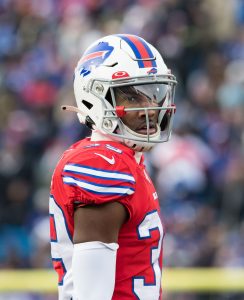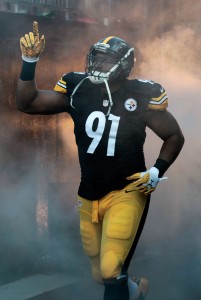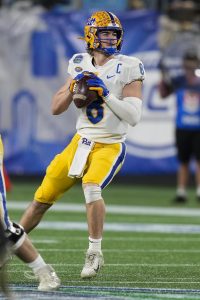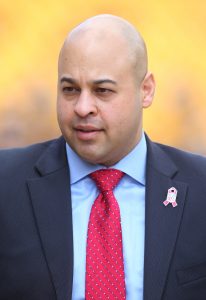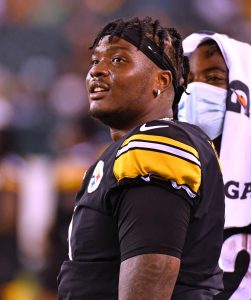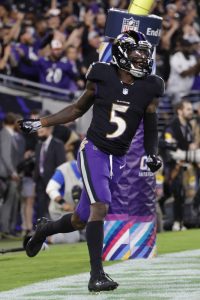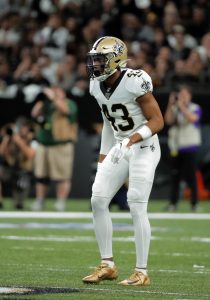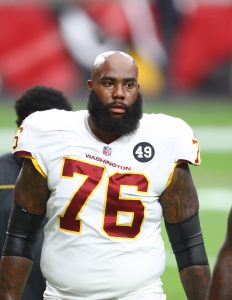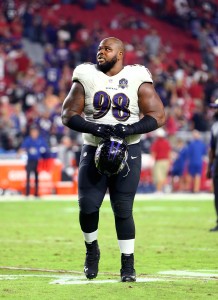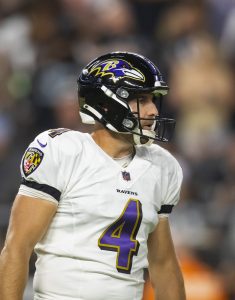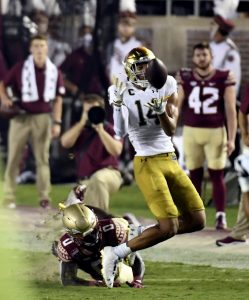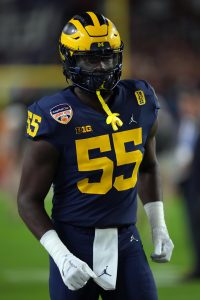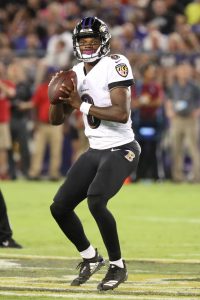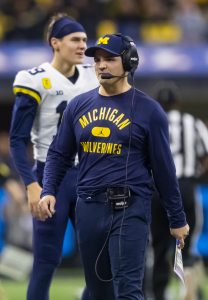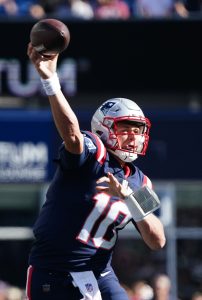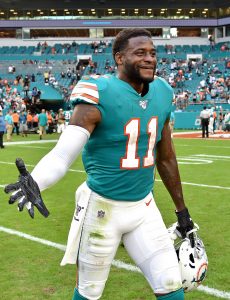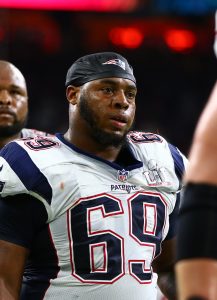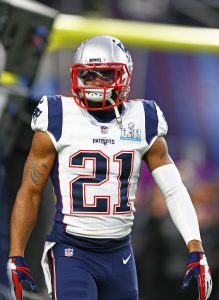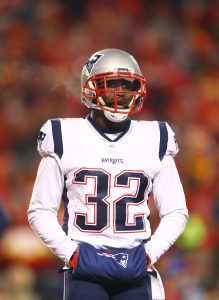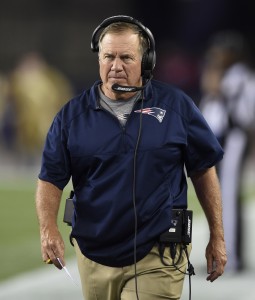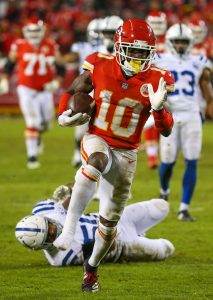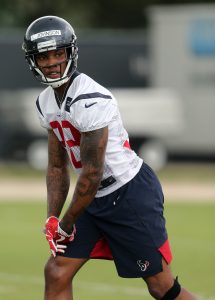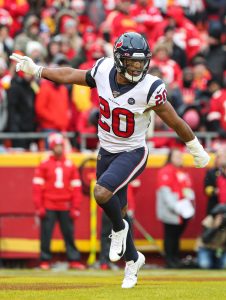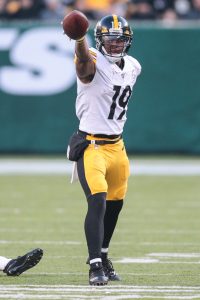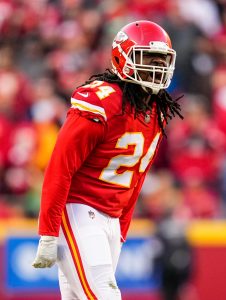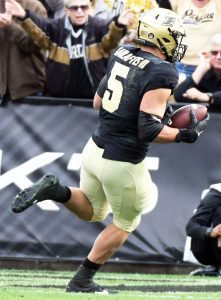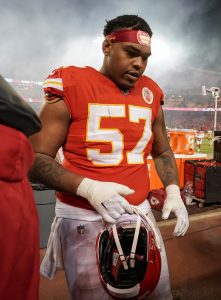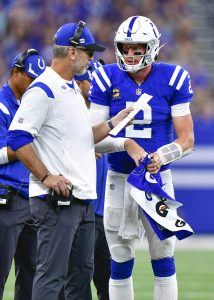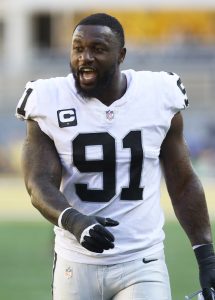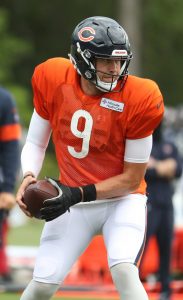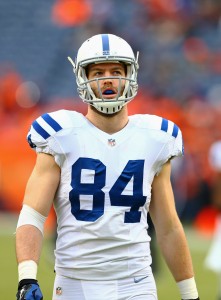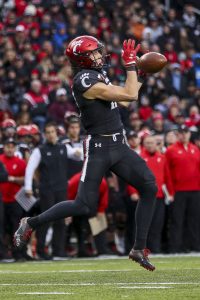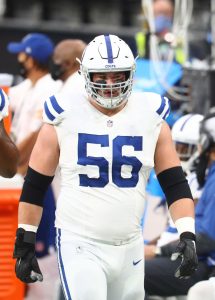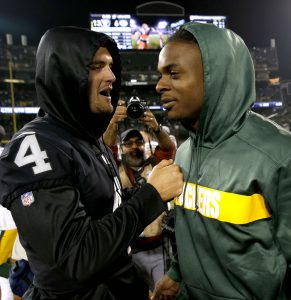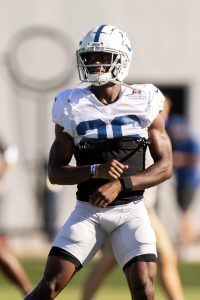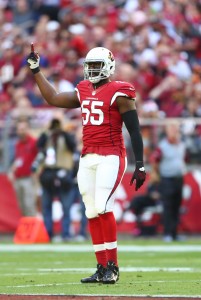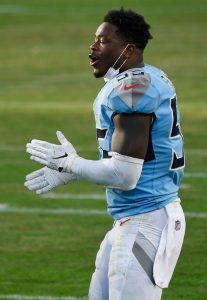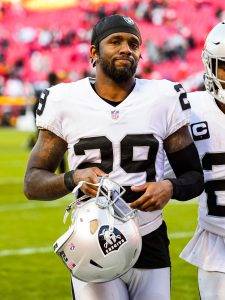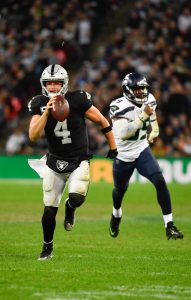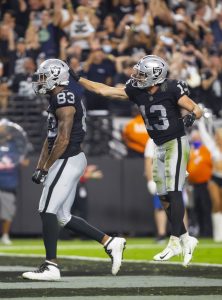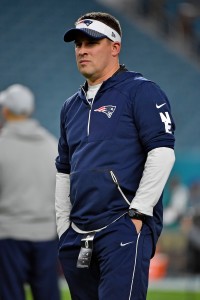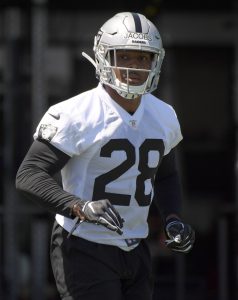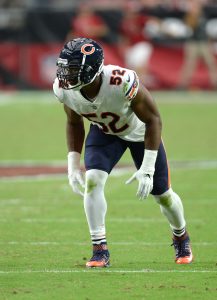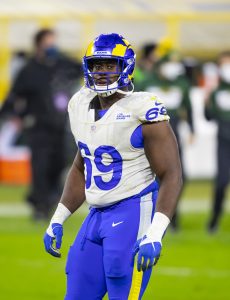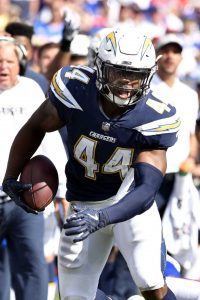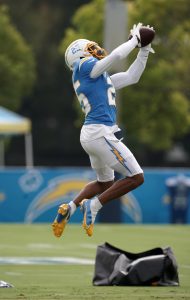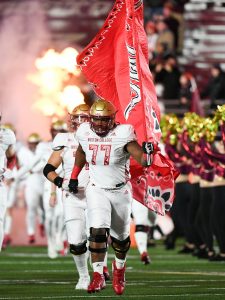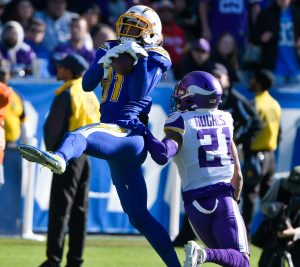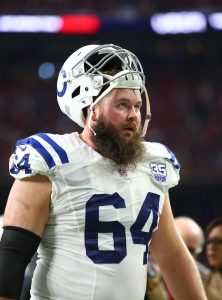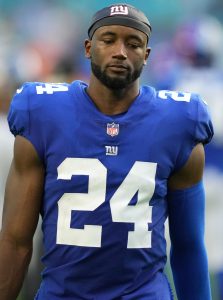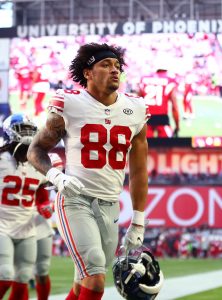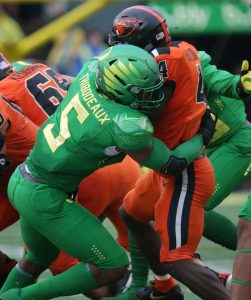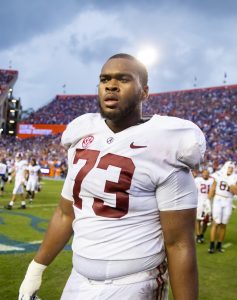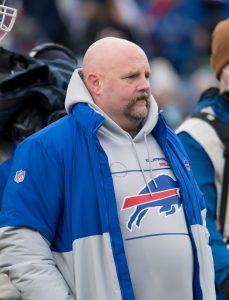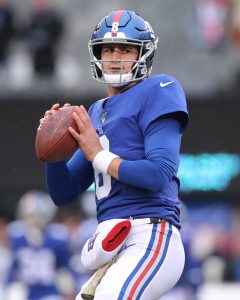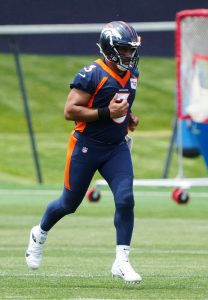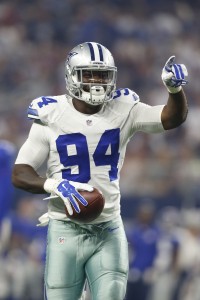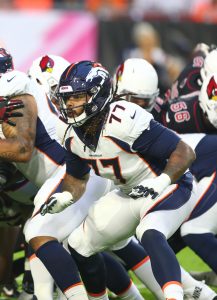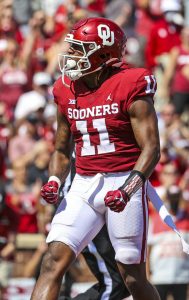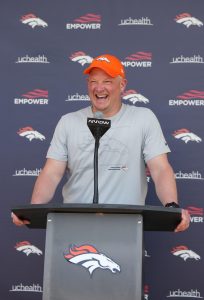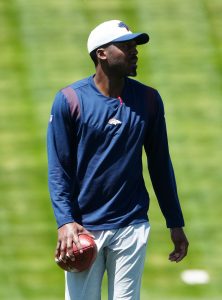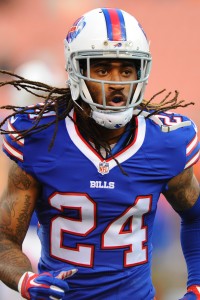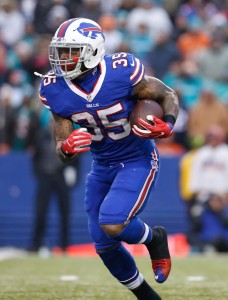The Patriots completed the biggest comeback in Super Bowl history, and they followed that up with an equally aggressive offseason. New England made a number of notable trades and free agent signings beginning in March to load up for Tom Brady‘s twilight seasons.
However, despite all of the names New England brought in this offseason, the biggest moves might have been the trades they didn’t make…
The Patriots first signing of the offseason was also the most lucrative. The organization convinced cornerback Stephon Gilmore to switch AFC East teams, handing him the most guaranteed money for a defensive player in franchise history. While trade rumors surrounded fellow cornerback Malcolm Butler for much of the offseason (before he ultimately signed his first-round restricted free agent tender…more on that later), the former Super Bowl hero is still in New England, and Gilmore figures to play alongside the former undrafted free agent.
The Patriots weren’t finished shaping their defense via free agency. Perhaps one of the most notable moves was the signing of linebacker David Harris, who joined New England following 10 years with the Jets. The 33-year-old certainly showed signs of decline in 2016, finishing with his lowest tackle total (86) since 2011 and the lowest sack total (0.5) of his career. Still, the veteran fills a bit of hole for the Patriots (especially following injuries to Shea McClellin and Derek Rivers), and he figures to start at linebacker for his new team.
Notable losses:
- Martellus Bennett, TE
- LeGarrette Blount, RB
- Kony Ealy, DE: Waived
- Michael Floyd, WR
- Tre’ Jackson, OL: Waived
- Chris Long, DE
- Barkevious Mingo, LB
- Rob Ninkovich, DE: Retired
- Logan Ryan, CB
- Jabaal Sheard, DE
- Sebastian Vollmer, T: Retired
The Patriots saw the departure of several players who played significant roles in the team’s recent postseason run. LeGarrette Blount was perhaps the most notable of those names, as he had collected 677 carries with New England since 2013, including a career-high 299 attempts in 2016. The veteran had his best NFL season in 2016, finishing with 1,161 rushing yards and a league-leading 18 rushing touchdowns. However, his 3.9-yards-per-carry was a bit disconcerting, and the Patriots ultimately decided to pursue fresher legs in Gillislee and Burkhead.
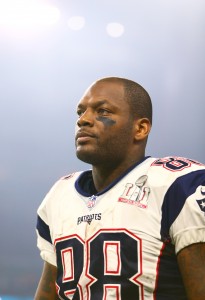 Tight end Martellus Bennett had a bounce-back campaign during his lone season in New England, finishing with 55 receptions for 701 yards and seven touchdowns. While the veteran proved to be an excellent compliment (as well as injury insurance) to tight end Rob Gronkowski, the Patriots seemingly weren’t willing to pay their technical “second tight end” the money he was seeking. Bennett ultimately parlayed his Super Bowl success into a lucrative contract from the Packers. Meanwhile, fellow offensive weapon Michael Floyd proved to be a dud during his brief cameo with the Patriots. The embattled wideout ultimately hauled in five receptions during his three-game stint (including playoffs) with the organization. He ultimately signed a contract with the Vikings this offseason.
Tight end Martellus Bennett had a bounce-back campaign during his lone season in New England, finishing with 55 receptions for 701 yards and seven touchdowns. While the veteran proved to be an excellent compliment (as well as injury insurance) to tight end Rob Gronkowski, the Patriots seemingly weren’t willing to pay their technical “second tight end” the money he was seeking. Bennett ultimately parlayed his Super Bowl success into a lucrative contract from the Packers. Meanwhile, fellow offensive weapon Michael Floyd proved to be a dud during his brief cameo with the Patriots. The embattled wideout ultimately hauled in five receptions during his three-game stint (including playoffs) with the organization. He ultimately signed a contract with the Vikings this offseason.
Elsewhere on offense, the Patriots saw the departure of a pair of offensive lineman. Veteran Sebastian Vollmer decided to hang up his cleats following an eight-year career with the organization. Injuries had taken a toll on the lineman, and he missed the entire 2016 campaign while dealing with recovery from shoulder surgery and a hip injury. New England released Vollmer in early March, and the 33-year-old announced his retirement several months later. Meanwhile, following an underwhelming two-year career with the organization, the Patriots waived 2015 fourth-round pick Tre’ Jackson. The lineman had started nine games as a rookie in 2015, but he missed the entire 2016 campaign with an injury.
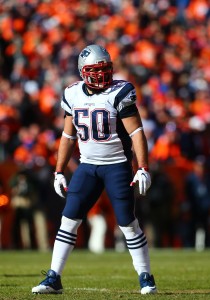 Defensively, the team’s biggest subtraction was Rob Ninkovich, who suddenly announced his retirement in late July. The Patriots stalwart had played the previous eight years in New England, and he started every game for the team between 2011 and 2015. The 33-year-old did take a step back in 2016, appearing in less than half the team’s defensive snaps and compiling only 17 tackles and four sacks. The veteran also missed the first four games of the season due to a suspension. While his production fell off, the Patriots could have used his presence this year considering their lack of depth at linebacker and defensive line.
Defensively, the team’s biggest subtraction was Rob Ninkovich, who suddenly announced his retirement in late July. The Patriots stalwart had played the previous eight years in New England, and he started every game for the team between 2011 and 2015. The 33-year-old did take a step back in 2016, appearing in less than half the team’s defensive snaps and compiling only 17 tackles and four sacks. The veteran also missed the first four games of the season due to a suspension. While his production fell off, the Patriots could have used his presence this year considering their lack of depth at linebacker and defensive line.
Another notable defensive subtraction regarded a player who never played a single regular season snap with the organization. The Patriots moved down eight spots during the draft to acquire former Panthers defensive end Kony Ealy, hoping that’d be fill some of the squad’s pass rushing question marks. The former second-round pick has certainly showed that prowess during his short career, compiling 14 sacks in three NFL seasons. He was also a standout during Super Bowl 50, collecting three sacks, one interception, and one forced fumble. The 25-year-old proved to be a poor “scheme fit” for the Patriots, and they waived him in late August.
 Cornerback Logan Ryan received a $30MM contract from the Titans following four seasons in New England. The former third-round pick had come into his own between 2016 and 2017, averaging 83 tackles and three interceptions per year. The Patriots apparently believe that they replaced him with an upgrade in Gilmore, although it’s worth noting that Ryan ranked as the NFL’s 17th-best cornerback (which was significantly higher than his replacement’s grade).
Cornerback Logan Ryan received a $30MM contract from the Titans following four seasons in New England. The former third-round pick had come into his own between 2016 and 2017, averaging 83 tackles and three interceptions per year. The Patriots apparently believe that they replaced him with an upgrade in Gilmore, although it’s worth noting that Ryan ranked as the NFL’s 17th-best cornerback (which was significantly higher than his replacement’s grade).
Meanwhile, a pair of veteran defensive ends pursued opportunities elsewhere. Chris Long saw mild success during his lone season in New England, compiling 35 tackles and four sacks. However, the veteran ultimately believed that he wasn’t a proper fit for the team’s defensive scheme, and he bolted for Philadelphia on a two-year deal. Meanwhile, following a productive first season with the Patriots, Jabaal Sheard seemingly lost favor of coaches in 2016. While he did start eight games, he wasn’t utilized nearly as much as the previous year, and he finished the campaign with 33 tackles and five sacks.
Barkevious Mingo, a 2013 first-round pick, played sparingly in 16 games for the Patriots last year, compiling nine tackles.
Trades:
The Patriots were busy this offseason, especially when it came to the trade market. However, the team ultimately didn’t pull the trigger on a pair of notable deals, and these decisions could have lasting repercussions on the franchise.
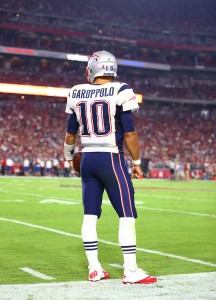 For starters, despite months of rumors, the organization decided to hold on to backup quarterback Jimmy Garoppolo. The Browns were mentioned as a potential landing spot, and there were reports that Cleveland reached out to the Patriots during the first round of this summer’s draft. The reasons for shopping Garoppolo were fairly straight forward; the quarterback is set to hit free agency following the 2017 season, and Tom Brady just led his team to a Super Bowl victory. If the team could return a first-rounder for the former second-rounder, why wouldn’t they make the move?
For starters, despite months of rumors, the organization decided to hold on to backup quarterback Jimmy Garoppolo. The Browns were mentioned as a potential landing spot, and there were reports that Cleveland reached out to the Patriots during the first round of this summer’s draft. The reasons for shopping Garoppolo were fairly straight forward; the quarterback is set to hit free agency following the 2017 season, and Tom Brady just led his team to a Super Bowl victory. If the team could return a first-rounder for the former second-rounder, why wouldn’t they make the move?
On the flip side, Garoppolo is 15 years younger than Brady, and he looked plenty competent during his cameo last season, completing 68.3-percent of his passes for 502 yards, four touchdowns, and zero interceptions. Furthermore, the organization could simply franchise Garoppolo if they really planned on keeping him (although it’s uncertain if the organization is willing to dish out that kind of money to a backup). If the Patriots refusal to accept a trade for the young signal-caller was indication enough, the team’s recent trade of fellow backup Jacoby Brissett only emphasizes that the team seemingly has a long-term vision for Garoppolo in New England.
No definitive trade offers for Garoppolo have been reported, so it’s merely speculation when it comes to what the Patriots could have received. The team’s unwillingness to trade the quarterback is presumably the safest route. Following the 2017 season, the Patriots could surely acquire a favorable asset after they franchise him. Meanwhile, if Brady sees a drop-off in production this year, the Patriots will be ready with his heir apparent.
Meanwhile, trade rumors also surrounded restricted free agent cornerback Malcolm Butler, who was apparently turned off by the team’s refusal to extend him to a lucrative contract… especially after they inked Gilmore to a hefty deal. The former Super Bowl hero ultimately received plenty of interest from the Saints this offseason. There were rumors that the Saints were willing to sign the restricted free agent despite his first-round tender, and subsequent reports indicated that New Orleans was working with the Patriots on a sign-and-trade scenario. Ultimately, the cornerback inked his free agent tender with New England, although his future with the franchise might be a bit murkier than Garoppolo’s. Butler will also be a free agent following the season, and considering his discontent with the organization, it’s probably more than likely that he bolts to another team.
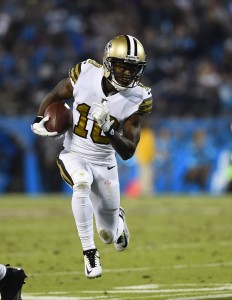 Now that we’ve discussed the trades the Patriots didn’t make, we can shift our focus to the deals that they actually pulled off. New England might have still pulled off the biggest trade of the offseason, acquiring wideout Brandin Cooks from New Orleans for a first-round pick. Cooks provides the Patriots with another talented weapon, and he’ll certainly be leaned on following the season-ending injury to Julian Edelman (although they were expected to play different roles). The 23-year-old receiver has finished the past two seasons with at least 1,000 receiving yards, 75 receptions, and eight touchdowns. Considering his youth, the sky could seemingly be the limit for Cooks.
Now that we’ve discussed the trades the Patriots didn’t make, we can shift our focus to the deals that they actually pulled off. New England might have still pulled off the biggest trade of the offseason, acquiring wideout Brandin Cooks from New Orleans for a first-round pick. Cooks provides the Patriots with another talented weapon, and he’ll certainly be leaned on following the season-ending injury to Julian Edelman (although they were expected to play different roles). The 23-year-old receiver has finished the past two seasons with at least 1,000 receiving yards, 75 receptions, and eight touchdowns. Considering his youth, the sky could seemingly be the limit for Cooks.
The Patriots made another trade to help shore up their offense, acquiring tight end Dwayne Allen from the Colts. The 27-year-old should replace Bennett on the depth chart, although he certainly doesn’t have the pass-catching prowess of the player he’s replacing. The tight end did have one of his better offensive campaigns in 2016, hauling in 35 catches for 406 yards and six touchdowns. The veteran has proven to be a competent blocker in past seasons, and it’s assumed he’ll see a similar role this upcoming year.
The team’s third significant move was only made last week, as the Patriots suddenly dealt third-string quarterback Jacoby Brissett for Colts wideout Phillip Dorsett. Brissett, a 2016 third-round pick, looked capable during his appearances with the Patriots last season, completing 61.8-percent of his passes for 400 yards, no touchdowns, and no interceptions. The 23-year-old added another 83 rushing yards and a touchdown on 16 carries. The organization was seemingly content with only one backup quarterback on the roster, and they found a taker in Indy, who was seeking depth during Andrew Luck‘s injury.
In return, the Patriots acquired Dorsett, a 2015 first-round pick. The wideout struggled to make an impact during his two years in the league, although he did look significantly better during his sophomore campaign. Dorsett ended up finishing the 2016 season with 33 receptions for 528 yards and two touchdowns, an improvement form his 225-yard rookie campaign. His role in New England is uncertain, and he figures to compete with Malcolm Mitchell and Danny Amendola to be the team’s third receiver.
The Patriots made a number of additional trades throughout the offseason, especially during the draft. Perhaps the most notable of these minor moves came last week, when they acquired defensive end Cassius Marsh from the Seahawks. The 25-year-old hadn’t missed a game for Seattle over the past two seasons, and he finished last year with 22 tackles and three sacks. Marsh may be immediately counted on to be the team’s first defensive end off the bench.
Draft picks:
After a bevy of trades leading up to the draft, the Patriots ultimately came away with only four picks – the fewest in team history. The Patriots did manage to acquire some depth, although it’s uncertain if any of the four are ready to contribute right away.
The team’s first pick came in the third round, when they selected defensive end Derek Rivers. The former Youngstown State standout was expected to contribute right away, especially as an edge rusher in passing situations. He was at least heading towards a reserve role when he tore his ACL and LCL, ending his rookie campaign. Rivers will now have a de facto redshirt season in 2017, but he’ll certainly have a role in the future thanks to his positional versatility. The Patriots used a fourth-round pick on another defender, lineman Deatrich Wise, who compiled 23 sacks in 31 collegiate games. Many have lauded the rookie for his intelligence and field awareness, although he’s expected to serve as a reserve during his rookie season.
Two picks after selecting Rivers, the Patriots chose Troy lineman Antonio Garcia. Despite being a bit undersized, the tackle proved to be especially capable at stopping pass rushers, with some pundits claiming he could eventually supplement Nate Solder as the team’s left tackle. For the 2017 season, Garcia figures to be a reserve, although his versatility could lead to more playing time. McDermott, a lineman out of UCLA, started 24 games over the past two seasons, although he’ll presumably be sitting at the end of the bench for most of the upcoming campaign.
Extensions and restructures:
The Patriots extended three major members of their offense during the offseason. Receiver Julian Edelman’s new deal should keep him in New England through the 2019 season. The veteran is set to miss the upcoming season, but the 31-year-old has been one of the most consistent targets in the NFL over the past four years. 2016 was another typical season for Edelman, as he finished with 98 receptions for 1,106 yards and three touchdowns. Chris Hogan will presumably inherit many of his teammate’s targets in 2017, but it isn’t inconceivable that Edelman returns to his role as Brady’s binky in 2018.
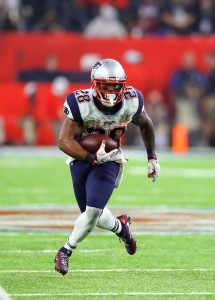 Meanwhile, following his 14-reception performance in the Super Bowl, the Patriots signed James White to a three-year extension. The running back was a bit of a revelation last season, finishing with career-highs in receptions (60), receiving yards (551), rushing yards (166 yards), and receiving touchdowns (five). The presence of fellow pass-catching back Dion Lewis, who has missed parts of the past two seasons due to injury, puts White’s 2017 role in doubt, but there’s no denying that the organization has long-term plans for the back. Finally, the team extended a key member of their offensive line to a three-year extension. David Andrews has started 27 games for the Patriots over the past two years, and he figures to be the team’s starting center again in 2017.
Meanwhile, following his 14-reception performance in the Super Bowl, the Patriots signed James White to a three-year extension. The running back was a bit of a revelation last season, finishing with career-highs in receptions (60), receiving yards (551), rushing yards (166 yards), and receiving touchdowns (five). The presence of fellow pass-catching back Dion Lewis, who has missed parts of the past two seasons due to injury, puts White’s 2017 role in doubt, but there’s no denying that the organization has long-term plans for the back. Finally, the team extended a key member of their offensive line to a three-year extension. David Andrews has started 27 games for the Patriots over the past two years, and he figures to be the team’s starting center again in 2017.
The restructuring of tight end Rob Gronkowski‘s contract proved to be a plus for both sides. Gronk now has an opportunity to more than double his 2017 salary based on new incentives, and the Patriots still get to maintain their future flexibility when it comes to the veteran’s contract (which could be especially useful considering his injury history). The incentives aren’t unrealistic, especially when you consider that he has three 1,000-yard campaigns to his name, as well as five seasons with 10-plus touchdowns.
Finally, as expected, Danny Amendola accepted another pay-cut from the organization. The veteran receiver has reduced his salary three times since joining the organization back in 2013.
Other:
We already touched on the injuries to Julian Edelman and Derek Rivers, but Cyrus Jones is another notable player who is expected to miss the entire upcoming season. The 2016 second-round pick struggled mightily during his rookie campaign, compiling only seven tackles in limited defensive snaps. The speedy Alabama product also looked lost in the return game, compiling five fumbles before he ultimately lost his gig. Jones did show some improvement during the preseason, and there was hope that he could at least overcome his rookie jitters and become a competent return man this year.
The Patriots have managed to find production from undrafted rookies in the past, although it’s unlikely that that will be the case this season. The team did sign 19 undrafted free agents, but only four of them ended up making the team’s 53-man roster. Harvey Langi might be the most intriguing of the bunch, as the BYU product could see himself thrust into the lineup should Dont’a Hightower or Kyle Van Noy get injured.
Finally, the Patriots decision to pick up Cooks fifth-year option was merely procedural, as the organization presumably wasn’t going to trade for a wideout with only one-year of team control.
Top 10 cap charges for 2017:
- Tom Brady, QB: $14,00,000
- Nate Solder, T: $11,166,418
- Devin McCourty, S: $10,935,000
- Stephon Gilmore, CB: $8,568,750
- Julian Edelman, WR: $7,416,666
- Rob Gronkowski, TE: $6,750,000
- Dont’a Hightower, LB: $5,335,938
- Dwayne Allen, TE: $4,937,500
- Alan Branch, DT: $4,625,000
- Stephen Gostkowski, K: $4,500,000
The Patriots have been especially aggressive during recent offseasons. Many pundits have attributed these moves to the Patriots desire to capitalize on Tom Brady’s final seasons in the NFL. That would seemingly be the case again in 2017, although many of the team’s moves will also have a long-term impact. Sure, they did deal off the majority of their draft picks in order to acquire “veteran talent.” However, the team’s biggest additions on both sides of the ball, Cooks and Gilmore, are 23 and 26, respectively. They also brought in younger alternatives to Blount, and they held on to the 25-year-old Garoppolo.
Ignoring the future implications of their moves (or non-moves), the Patriots clearly did enough to be considered a Super Bowl contender once again in 2017.
Information from Over the Cap and Roster Resource was used in the creation of this post. Photos courtesy of USA Today Sports Images.
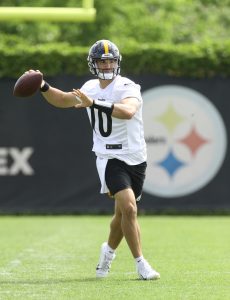 As apparent as Roethlisberger’s decline became, the Steelers likely will open the season with one of the NFL’s worst starting quarterbacks. QBR did slot Trubisky’s 2020 season ahead of even Roethlisberger’s — which featured 33 touchdown passes for a team with a last-ranked rushing attack — but the former one-year North Carolina starter has submitted an extensive run of mediocre NFL play. The Steelers do have a more well-rounded receiver stable compared to Trubisky’s Chicago troops, a largely Allen Robinson-dependent operation, and, likely, a superior running back. Perhaps with better tools, the 2017 No. 2 overall pick can make stabs at further rebuilding his stock.
As apparent as Roethlisberger’s decline became, the Steelers likely will open the season with one of the NFL’s worst starting quarterbacks. QBR did slot Trubisky’s 2020 season ahead of even Roethlisberger’s — which featured 33 touchdown passes for a team with a last-ranked rushing attack — but the former one-year North Carolina starter has submitted an extensive run of mediocre NFL play. The Steelers do have a more well-rounded receiver stable compared to Trubisky’s Chicago troops, a largely Allen Robinson-dependent operation, and, likely, a superior running back. Perhaps with better tools, the 2017 No. 2 overall pick can make stabs at further rebuilding his stock.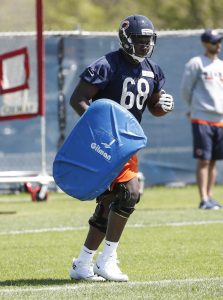 Trubisky invites obvious questions about Pittsburgh’s viability, but he should be protected better than Roethlisberger was in his finale. The team’s top O-line addition, Daniels will not turn 25 until mid-September. Pro Football Focus graded the former Bears second-round pick as a top-25 guard in each of his three full seasons as a starter. This type of player is not usually available for less than $9MM guaranteed, which points to front offices being less sold on the Iowa alum’s skills compared to PFF. But Daniels is the kind of player to bet on — one just coming into his prime — and the Steelers have him on barely a top-15 guard contract through 2024.
Trubisky invites obvious questions about Pittsburgh’s viability, but he should be protected better than Roethlisberger was in his finale. The team’s top O-line addition, Daniels will not turn 25 until mid-September. Pro Football Focus graded the former Bears second-round pick as a top-25 guard in each of his three full seasons as a starter. This type of player is not usually available for less than $9MM guaranteed, which points to front offices being less sold on the Iowa alum’s skills compared to PFF. But Daniels is the kind of player to bet on — one just coming into his prime — and the Steelers have him on barely a top-15 guard contract through 2024.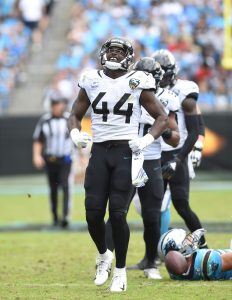 As could be expected, based on how the Steelers built their 2021 O-line, PFF graded the quintet 26th last season. Big Ben took 38 sacks — his most since 2013 — and Najee Harris managed only 3.9 yards per carry. It would be nice if the Steelers had elite O-line coach Mike Munchak back to help make these mid-tier contracts sparkle, but the team made some cost-efficient enhancements up front. It remains to be seen if they will be drastic improvements or patch jobs.
As could be expected, based on how the Steelers built their 2021 O-line, PFF graded the quintet 26th last season. Big Ben took 38 sacks — his most since 2013 — and Najee Harris managed only 3.9 yards per carry. It would be nice if the Steelers had elite O-line coach Mike Munchak back to help make these mid-tier contracts sparkle, but the team made some cost-efficient enhancements up front. It remains to be seen if they will be drastic improvements or patch jobs.